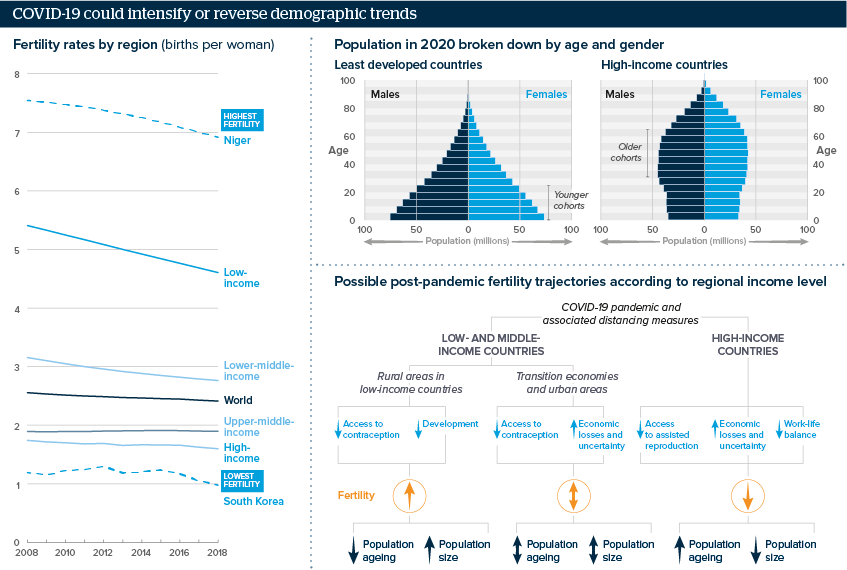COVID-19 could disrupt demographic trends globally
The pandemic is already affecting people’s choices about the size of their families
Source: Aassve, N. Cavalli, L. Mencarini, S. Plach, M. Livi Bacci, SCIENCE 24 JUL 2020 : 370-371, The COVID-19 pandemic and human fertility; UN Population Division; World Bank
Outlook
Pandemics, wars and disasters have historically led to changes in fertility: initially resulting in fewer births but rates subsequently recovering. COVID-19 is also likely to affect fertility. Demography researchers suggest that the pandemic’s global economic shock, associated uncertainty and access to fertility treatments or contraception could lead to demographic changes according to countries’ particular characteristics.
In high-income countries, the pandemic could compound trends of low fertility and ageing populations, as people postpone having children but high maternal ages and restricted access to assisted reproductive technology means those births may never happen. By contrast, trends towards fewer children in low-income countries may be reversed. Poverty is associated with larger families as it increases the benefits of children’s unpaid labour. Restricted access to contraception may also result in higher fertility. The effect on middle-income countries is likely to be mixed.
Impacts
- Lessening the childcare burden, especially during COVID-19, would likely increase fertility.
- If COVID-19 accelerates population ageing in high-income countries, that would add a further strain on pension systems.
- In low- and middle-income countries, higher fertility in rural areas may not be enough to offset decreases in cities.
See also
- Rapid demographic growth may destabilise the Sahel - Aug 18, 2021
- Turkish birth rate will resist government policy - Jun 3, 2021
- Pandemic will hasten China’s demographic decline - Feb 9, 2021
- Pandemic will widen major gender gaps - Apr 30, 2020
- Differing demographic trends create chances and tests - May 22, 2019
- More graphic analysis
